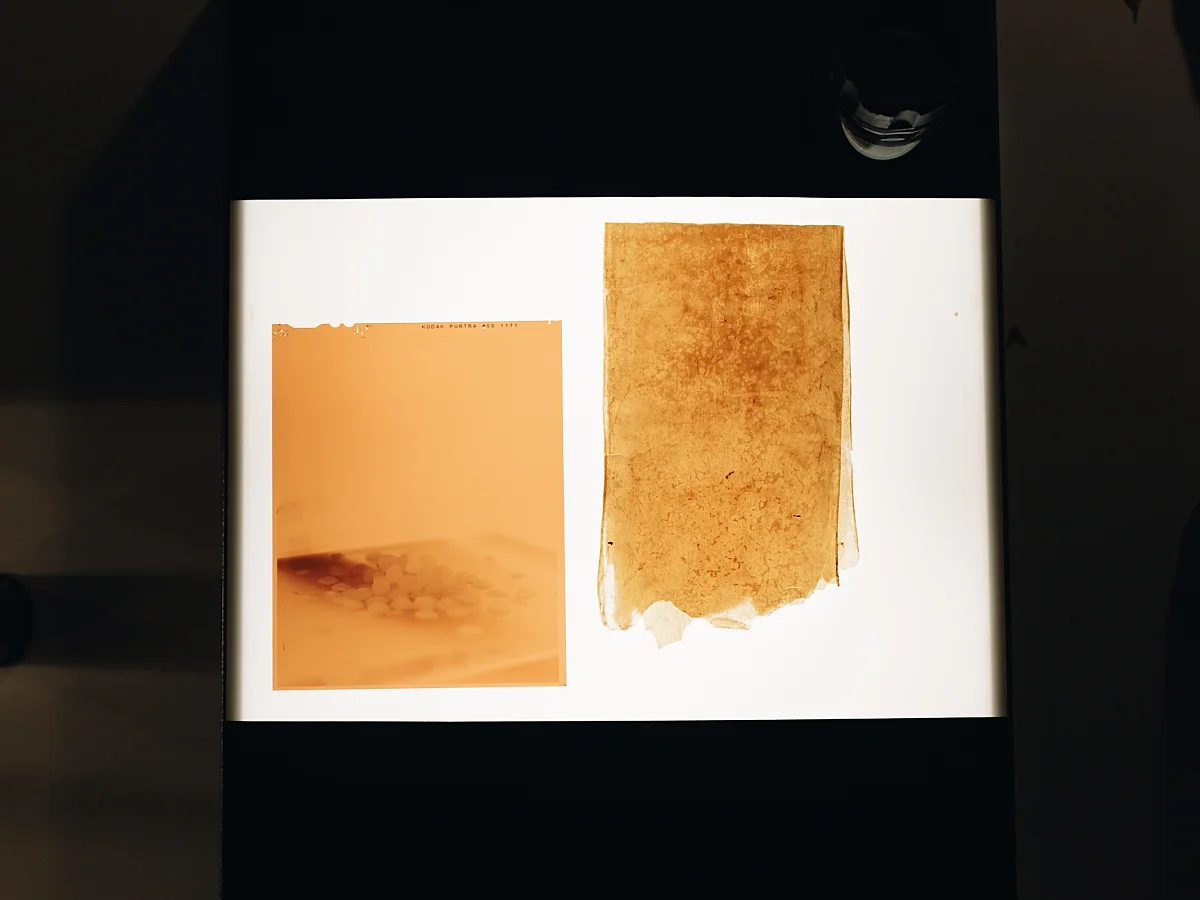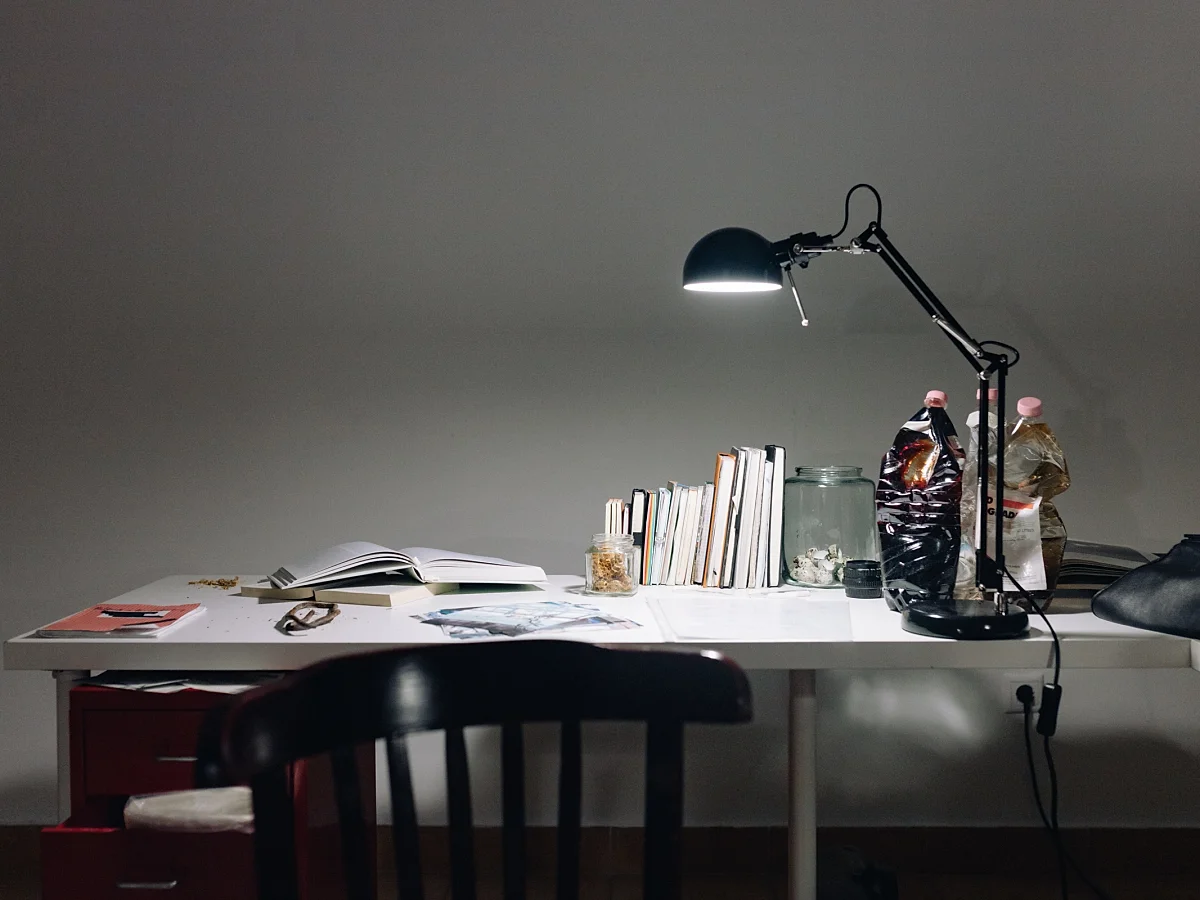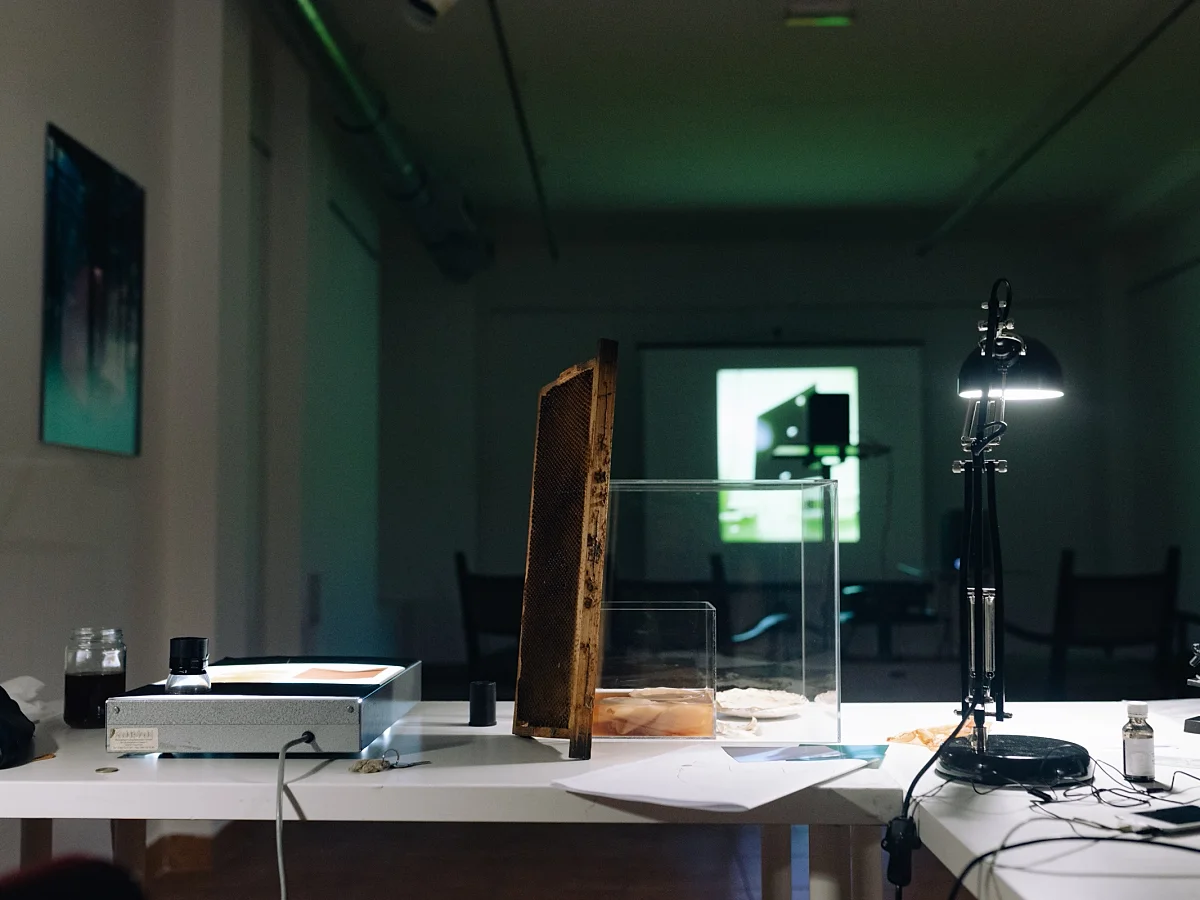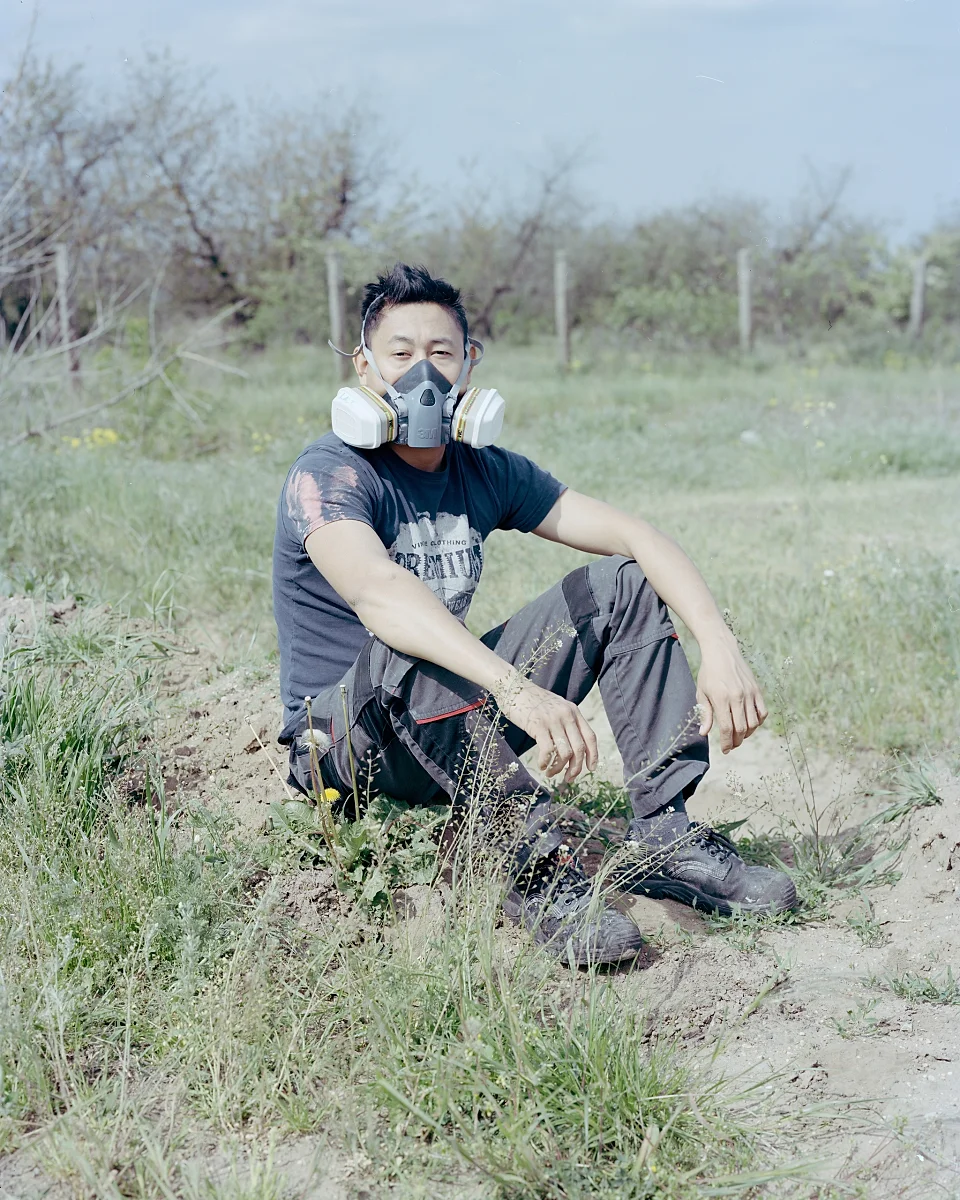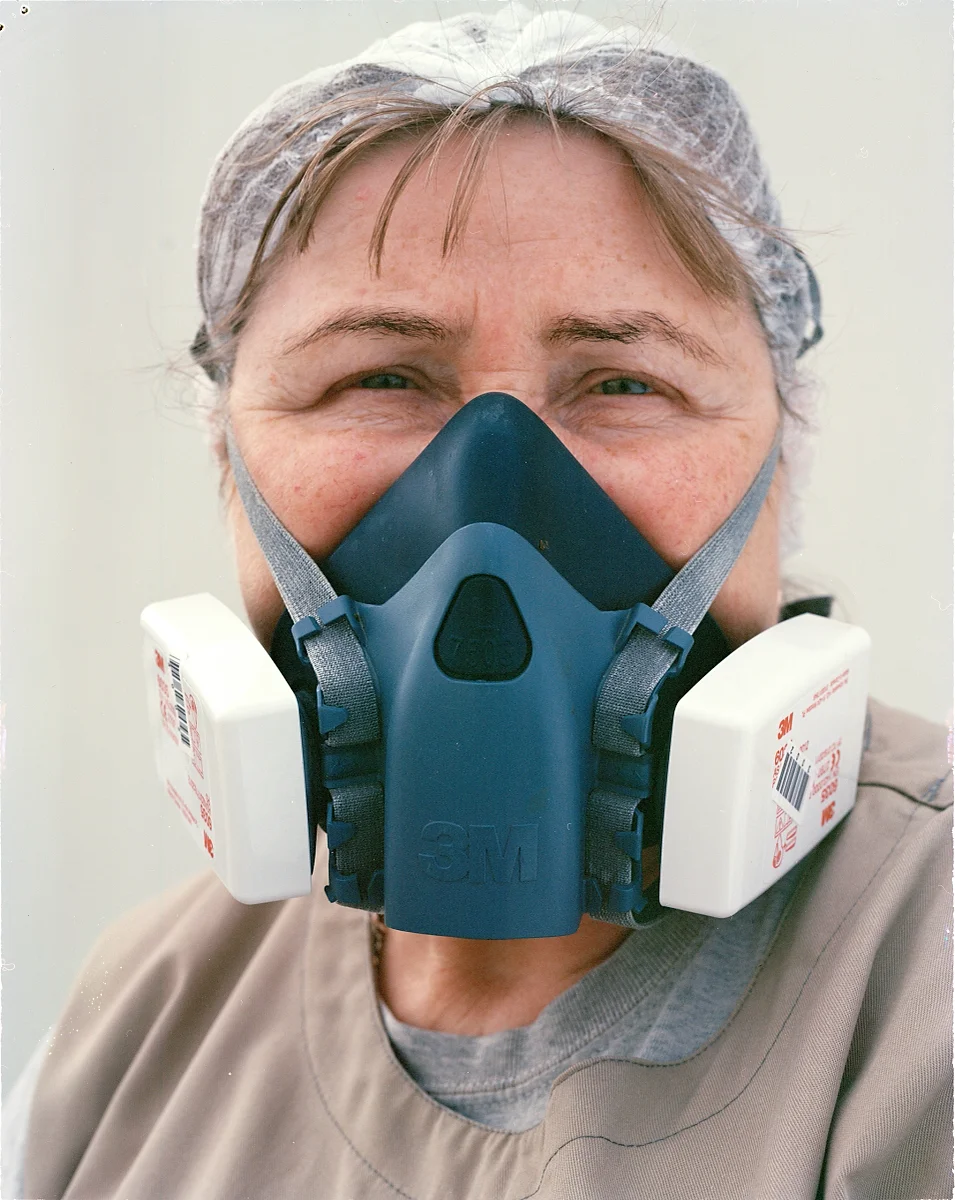Moholy-Nagy University of Art and Design
Fieldwork in the Laboratory
Project overview
Student name
Daniella Grinberg
Programme
Degree level
Department
Year of project
2023
The project Grinberg started in autumn is about unveiling the interconnectedness of things and showing conflicts between human and non-human entities, focusing on various forms of control systems.
“Whatever we say about ourselves, the lived topography of our social world has never been as neatly segregated as our maps.”
Peter J. Leithart
Her presented work is part of a large-scale research project which is highly influenced by the theories of French philosopher and anthropologist Bruno Latour, including his study ‘Laboratory Life’ from 1979, which explores the construction of scientific facts, and the actor-network theory describing the relationship between human and non-human actors. Her research also draws on the works of authors such as Paul Feyerabend, Thomas Kuhn, Michel Foucault, Donna Haraway, Merlin Sheldrake, Anna Lowenhaupt Tsing, Hannah Arendt, T.J. Demos, and Joanna Zylinska.
The current phase of Fieldwork was realised in the form of an exhibition at K11 Labor gallery in April, and the work process was presented in the form of a site-specific installation consisting of three parts. According to Latour, myths of linear progress provide a limited context for understanding technological change. The modern epistemology that separates nature and culture (or, in other words, society), which is the basis of modern self-identity, will never be able to represent reality. In the atmosphere of our own laboratory, the world is closely interconnected, and understanding the relationships between isolated parts of reality is crucial to understanding the world as a whole. Traditional ways of thinking about the world, such as the principle of separate categories or dichotomies, are not suitable for capturing the complexity and interconnectedness of reality.
The questions Grinberg is asking herself are the following: If scientific research in the laboratory is a rational and largely asocial process, how well can it reveal universal truths about the natural world? What happens when we simultaneously believe in science, religion, culture, art, and other conventionally separate aspects of understanding, perhaps even from a not human centred perspective? Can we decentralise the control systems of understanding? Furthermore, Latour's theory or idea of a “parliament of things” raises important questions about the relationship between humans and the natural world and prompts us to think creatively about new ways of organising our political systems and institutions.
Fieldwork was born out of Grinberg’s desire to rethink social organisation along these lines and map out possible alternatives with the help of photography as a world making practice.
She felt that studying the organisation of social insects such as bees, and the underground network of fungi might reveal important lessons about cooperation, division of labour, communication, sustainability, and the values of adaptability.
Peter J. Leithart
Her presented work is part of a large-scale research project which is highly influenced by the theories of French philosopher and anthropologist Bruno Latour, including his study ‘Laboratory Life’ from 1979, which explores the construction of scientific facts, and the actor-network theory describing the relationship between human and non-human actors. Her research also draws on the works of authors such as Paul Feyerabend, Thomas Kuhn, Michel Foucault, Donna Haraway, Merlin Sheldrake, Anna Lowenhaupt Tsing, Hannah Arendt, T.J. Demos, and Joanna Zylinska.
The current phase of Fieldwork was realised in the form of an exhibition at K11 Labor gallery in April, and the work process was presented in the form of a site-specific installation consisting of three parts. According to Latour, myths of linear progress provide a limited context for understanding technological change. The modern epistemology that separates nature and culture (or, in other words, society), which is the basis of modern self-identity, will never be able to represent reality. In the atmosphere of our own laboratory, the world is closely interconnected, and understanding the relationships between isolated parts of reality is crucial to understanding the world as a whole. Traditional ways of thinking about the world, such as the principle of separate categories or dichotomies, are not suitable for capturing the complexity and interconnectedness of reality.
The questions Grinberg is asking herself are the following: If scientific research in the laboratory is a rational and largely asocial process, how well can it reveal universal truths about the natural world? What happens when we simultaneously believe in science, religion, culture, art, and other conventionally separate aspects of understanding, perhaps even from a not human centred perspective? Can we decentralise the control systems of understanding? Furthermore, Latour's theory or idea of a “parliament of things” raises important questions about the relationship between humans and the natural world and prompts us to think creatively about new ways of organising our political systems and institutions.
Fieldwork was born out of Grinberg’s desire to rethink social organisation along these lines and map out possible alternatives with the help of photography as a world making practice.
She felt that studying the organisation of social insects such as bees, and the underground network of fungi might reveal important lessons about cooperation, division of labour, communication, sustainability, and the values of adaptability.
She speculates that by incorporating these lessons into our own systems and society, we can create more efficient and harmonious communities, though this would require a radical rethinking of our "knowledge" that comes from science. Her notes were taken intuitively during the fieldwork in an effort to counter the myth of objectivity.
The purpose of the combination of her visual documentation, essays, and found objects is to jolt the viewer out of a single perspective. In the exhibition, she aimed to reenact the multisensory effects experienced during fieldwork. In the exhibition space, we can see the three phases of the fieldwork and their different visual representations – a research table full of notes, the pictures on the wall, and a projection accompanied by a two-channel sound installation. In the back of the exhibition space, a twelve-minute slideshow displays the 22 completed photographs presented during the previous semester in the form of a series. The sound installation integrated with the slide show includes a personal audio interview with the beekeeper about the current situation of Hungarian and global agriculture, image sonification of individual photographs, and various field recordings. A fictional reconstruction of her research table can be seen in the middle of the square.
For her, the creation of the research desk was the most important step forward in her project, because it not only symbolises this creative-researcher task, but also reflects on its nature. The still-life-like constellation includes the photographer's technical tools, notebooks, documents, train tickets, open books, stacks of paper, seeds, fermenting mushroom culture and mycelium, microscope, print tests, beekeeper's frame, computer, unexposed cyanotype, negative slide, and a shot that has not yet been digitally processed. There are also three essays on the table. In these, she writes about the observations of the fieldwork at three different locations, using the inclusion of mycological literature, beekeeping magazines and other writings related to the locations, about the conditions of beekeeping, mushroom farms, and the exotic pet trade industry.
To her, the images of the completed photo series and the exhibition represent only a starting point in her research, and she is still looking for answers to her questions. She continues to write and collect relevant literature and has plans to contact specialists related to her topic. The laboratory of Fieldwork in the Laboratory will continue to move with her even after the exhibition, and she will carry on with the work in her imaginary research place. She is currently experimenting with Symbiotic Bacterial Culture skin (biofilm), as well as mycelium, and wants to transform membranes made from ephemeral materials into image-bearing materials. She would also like to focus more on the materiality of celluloid film, to delve into the background processes, to create a closer relationship, to form a language, and to present the assumed perspective of the living beings and objects in this pictorial formulation.
The purpose of the combination of her visual documentation, essays, and found objects is to jolt the viewer out of a single perspective. In the exhibition, she aimed to reenact the multisensory effects experienced during fieldwork. In the exhibition space, we can see the three phases of the fieldwork and their different visual representations – a research table full of notes, the pictures on the wall, and a projection accompanied by a two-channel sound installation. In the back of the exhibition space, a twelve-minute slideshow displays the 22 completed photographs presented during the previous semester in the form of a series. The sound installation integrated with the slide show includes a personal audio interview with the beekeeper about the current situation of Hungarian and global agriculture, image sonification of individual photographs, and various field recordings. A fictional reconstruction of her research table can be seen in the middle of the square.
For her, the creation of the research desk was the most important step forward in her project, because it not only symbolises this creative-researcher task, but also reflects on its nature. The still-life-like constellation includes the photographer's technical tools, notebooks, documents, train tickets, open books, stacks of paper, seeds, fermenting mushroom culture and mycelium, microscope, print tests, beekeeper's frame, computer, unexposed cyanotype, negative slide, and a shot that has not yet been digitally processed. There are also three essays on the table. In these, she writes about the observations of the fieldwork at three different locations, using the inclusion of mycological literature, beekeeping magazines and other writings related to the locations, about the conditions of beekeeping, mushroom farms, and the exotic pet trade industry.
To her, the images of the completed photo series and the exhibition represent only a starting point in her research, and she is still looking for answers to her questions. She continues to write and collect relevant literature and has plans to contact specialists related to her topic. The laboratory of Fieldwork in the Laboratory will continue to move with her even after the exhibition, and she will carry on with the work in her imaginary research place. She is currently experimenting with Symbiotic Bacterial Culture skin (biofilm), as well as mycelium, and wants to transform membranes made from ephemeral materials into image-bearing materials. She would also like to focus more on the materiality of celluloid film, to delve into the background processes, to create a closer relationship, to form a language, and to present the assumed perspective of the living beings and objects in this pictorial formulation.
